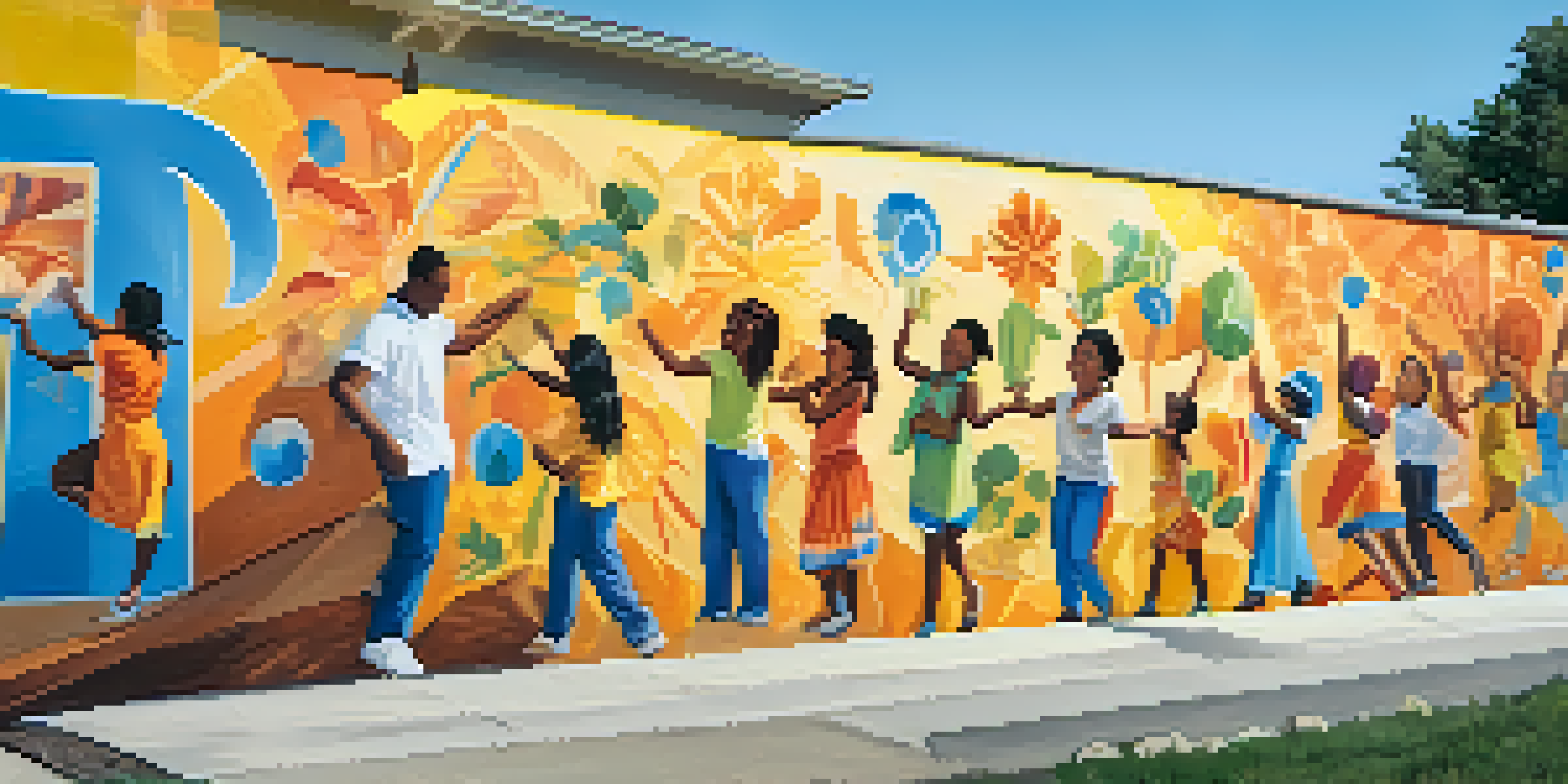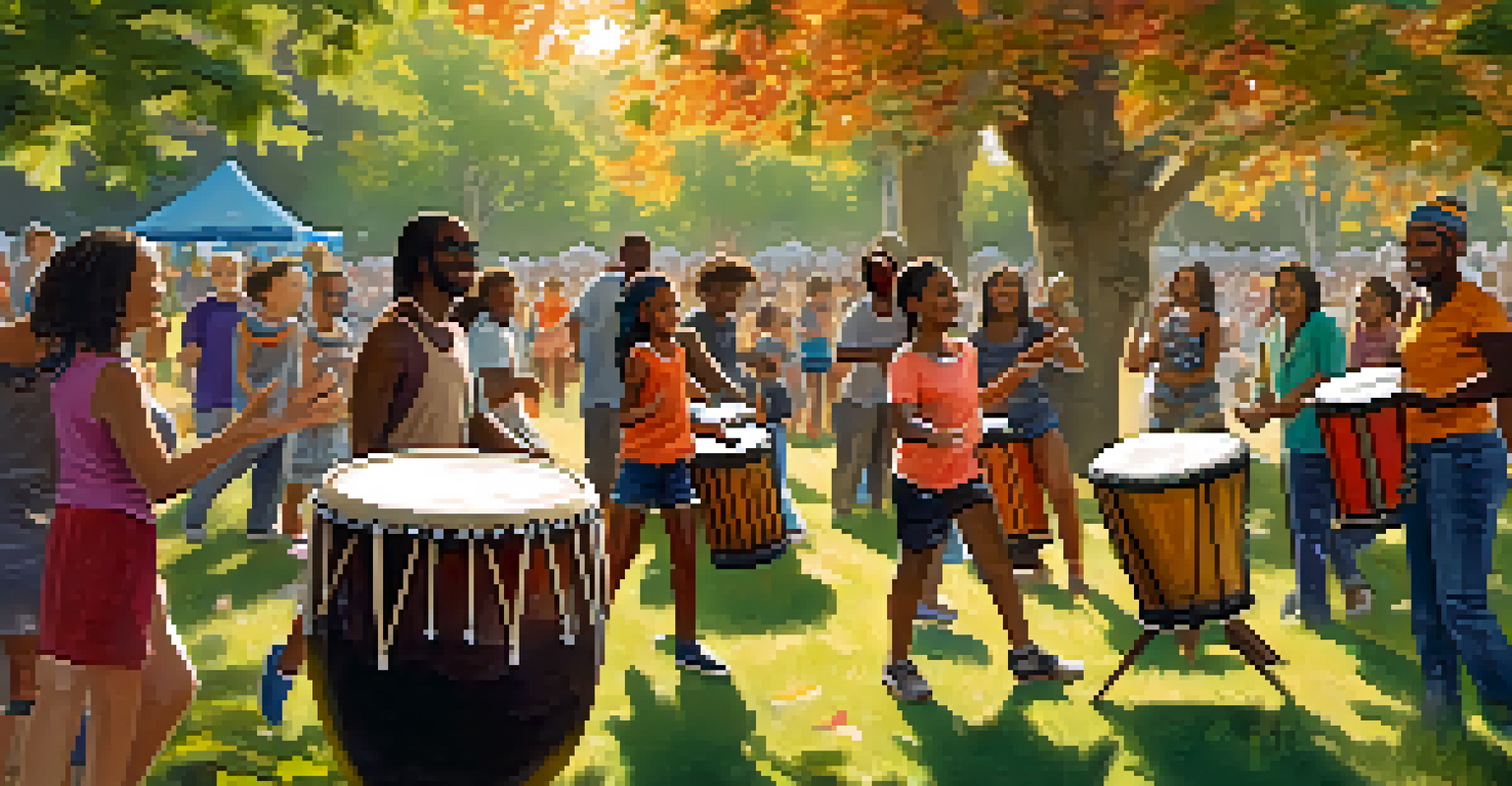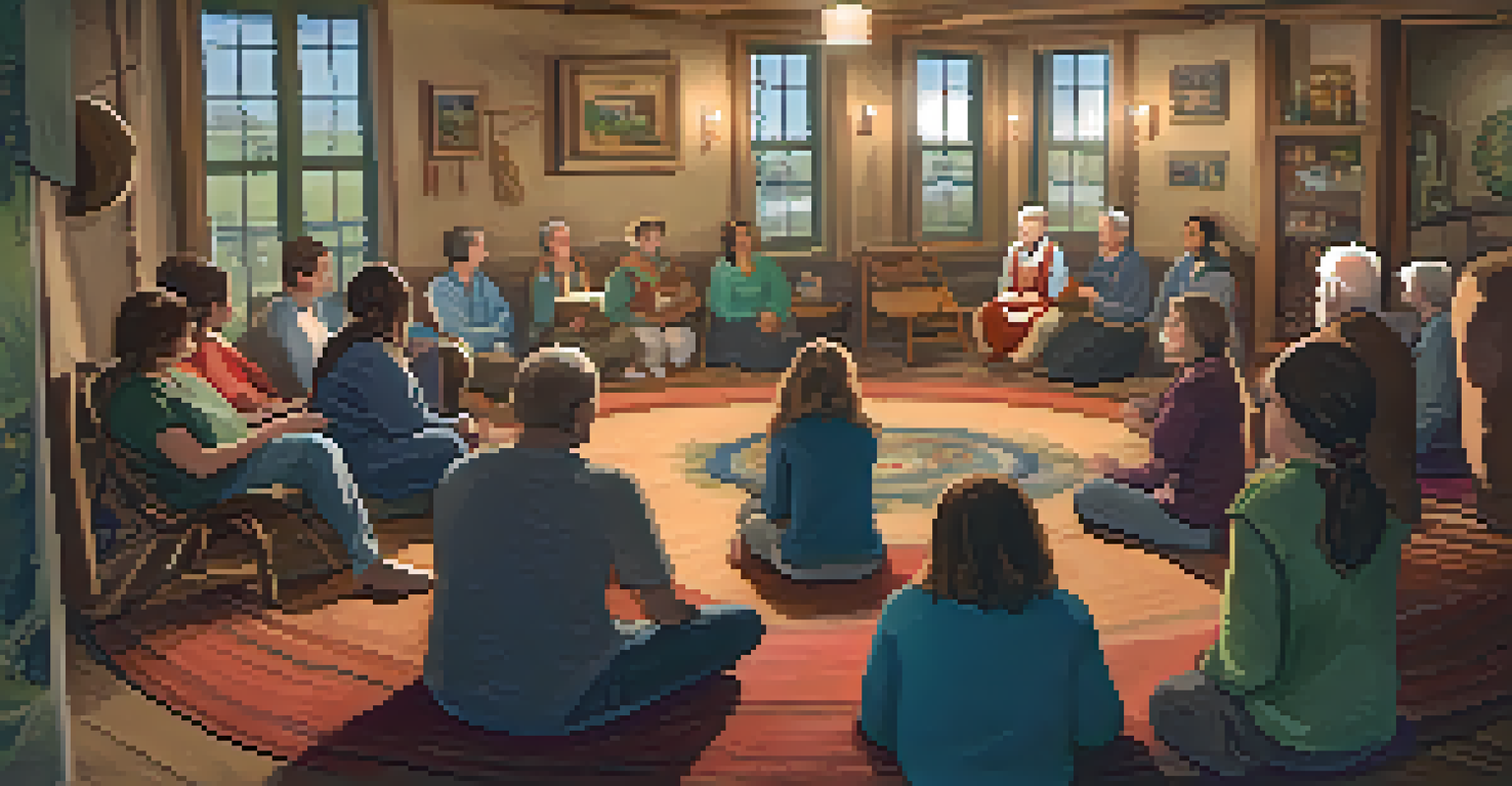Cultural Art Forms and Their Role in Community Healing

Understanding Community Healing Through Cultural Expression
Community healing is a process that nurtures emotional and social well-being. It often involves collective experiences that bring people together, and cultural art forms play a pivotal role in this. By engaging in artistic traditions, individuals can express their feelings and connect with others who share similar experiences.
Art is the most beautiful of all lies.
Consider how a community art project can transform a neglected space into a vibrant mural. This not only beautifies the environment but also fosters a sense of ownership and pride among residents. People from different backgrounds come together to share stories, bridging divides and promoting understanding.
Ultimately, cultural expression becomes a medium for storytelling, allowing individuals to voice their struggles and triumphs. This shared narrative fosters empathy and solidarity, essential components of healing within a community.
The Role of Music in Healing and Connection
Music has a unique ability to evoke emotions and create connections among people. Whether through traditional folk songs or contemporary beats, music can act as a universal language that transcends cultural barriers. When communities gather to share music, they engage in a healing process that nurtures both individual and collective identities.

Take, for instance, community drum circles where participants can express themselves rhythmically. These gatherings often lead to a release of pent-up emotions, allowing individuals to feel lighter and more connected to their peers. The shared experience of creating music fosters a sense of belonging, which is crucial for emotional healing.
Art Fosters Community Healing
Cultural art forms, such as music, dance, and visual arts, play a crucial role in nurturing emotional well-being and fostering connections within communities.
Moreover, music therapy has been recognized for its effectiveness in addressing mental health issues. By incorporating cultural elements into therapeutic practices, communities can harness the power of music to heal and restore a sense of normalcy.
Dance as a Form of Expression and Healing
Dance is another powerful cultural art form that can facilitate healing within communities. It allows individuals to express their emotions in a physical form, often leading to catharsis and personal growth. Community dance events encourage participation and create a joyful atmosphere where everyone can feel free and accepted.
Music can change the world because it can change people.
Think about traditional dances that tell stories of heritage and history. These performances not only honor the past but also provide a space for collective identity, which is vital for healing. When people participate in dances together, they reinforce community bonds and foster a sense of unity.
Furthermore, dance therapy is increasingly being recognized for its benefits in mental health. Integrating cultural dance forms into therapeutic sessions helps individuals reconnect with their bodies, improve self-esteem, and cultivate a deeper understanding of themselves through movement.
Visual Arts: A Canvas for Collective Healing
Visual arts serve as a profound avenue for community healing, allowing individuals to express complex emotions through various mediums. Whether it’s painting, sculpture, or photography, art can transform pain into something beautiful. Communities that engage in visual arts often find solace in shared creativity, which fosters healing on both personal and communal levels.
For example, community art exhibits can showcase the experiences of marginalized groups, giving them a platform to share their stories. This visibility not only validates their experiences but also invites dialogue among community members. The act of creating and sharing art promotes healing through understanding and empathy.
Storytelling Builds Connections
Sharing personal narratives through storytelling enhances understanding and empathy, creating a sense of belonging and support among community members.
Additionally, art therapy has gained traction as a tool for healing trauma. By incorporating visual arts into therapeutic practices, individuals can process their emotions in a non-verbal way, making it easier to confront difficult memories and feelings.
Storytelling: Weaving Narratives for Healing
Storytelling is an age-old tradition that plays a significant role in cultural expression and healing. Through the act of sharing stories, individuals can process their experiences and emotions. This communal activity fosters connections and understanding, making it an essential part of community healing.
Consider local storytelling events where individuals share personal narratives. These gatherings allow people to find common ground, fostering a sense of belonging and support. Listening to others' stories can also provide new perspectives, helping individuals feel less isolated in their struggles.
Moreover, storytelling can serve as a tool for education and awareness. By sharing stories of resilience and hope, communities can inspire and uplift one another, reinforcing the importance of collective healing.
The Impact of Cultural Festivals on Community Well-Being
Cultural festivals are vibrant celebrations that bring communities together, fostering a sense of belonging and unity. These events showcase various art forms—music, dance, food, and crafts—that reflect the community's heritage. By participating in these festivities, individuals can connect with their roots and strengthen their cultural identity.
For example, a local cultural festival may feature workshops, performances, and storytelling sessions that encourage participation from all ages. Such gatherings create a safe space for individuals to express themselves and share their unique stories, promoting healing through connection.
Cultural Festivals Unite People
Cultural festivals celebrate diverse art forms and encourage participation, promoting healing and social change by connecting individuals to their heritage.
Additionally, these festivals often serve as platforms for social change, raising awareness about local issues and inspiring collective action. By coming together to celebrate culture, communities can empower one another, leading to a stronger, more resilient social fabric.
Integrating Art into Healing Practices: A Holistic Approach
Integrating cultural art forms into healing practices creates a holistic approach to well-being. This method recognizes the importance of emotional, physical, and social aspects of healing. By incorporating art into traditional therapeutic practices, communities can enhance the healing process, making it more accessible and relatable.
For instance, community health programs that include art workshops can provide individuals with tools to express their emotions. This integration not only fosters creativity but also encourages participants to explore their feelings in a supportive environment. As a result, individuals can gain insights into their experiences, promoting healing.

Furthermore, this holistic approach acknowledges the diverse cultural backgrounds of community members. By honoring and incorporating various art forms, practitioners can create inclusive spaces that respect and celebrate individual identities while fostering collective healing.
The Future of Cultural Art Forms in Community Healing
As communities evolve, the role of cultural art forms in healing will continue to adapt and grow. New technologies and platforms enable broader access to artistic expression, allowing more individuals to participate in the healing journey. Virtual art projects and online storytelling platforms are just a few examples of how communities can expand their reach.
Moreover, as awareness of mental health issues increases, the demand for art-based therapies is likely to rise. Communities are beginning to recognize the power of art as a tool for healing, leading to more initiatives that integrate cultural art forms into health and wellness programs.
Looking ahead, it’s essential for communities to embrace their unique cultural identities while supporting one another in the healing process. By fostering an environment that values artistic expression, communities can cultivate resilience, empathy, and unity, ultimately paving the way for a brighter future.